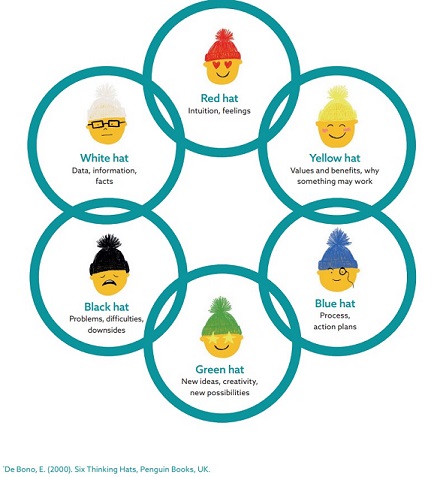Unleashing imaginative power in the Liverpool City Region
Posted on: 20 January 2023 by Mark Swift in Blog

In the second of a two-part blog, Heseltine Institute Visiting Fellow Mark Swift discusses how policymakers can work with communities to harness imagination. Highlighting a range of positive examples from Liverpool City Region, the blog also identifies a variety of strategies designed to promote imaginative policymaking.
How can we unleash imaginative power to bring about the social change we so desperately need?
Diversity matters
Diversity is the engine oil of creativity and innovation. We need diversity of views and opinions to drive more creative and imaginative solutions to the age-old problems that we are grappling with. Ultimately our world views are shaped by a great many variables, not least our heritage, socioeconomic status and lived experiences. Without a commitment to embracing diversity organisations may fall into well documented thought traps like ‘groupthink’, in which group members explain away variation and reinforce their own or others assumptions and often prejudices about what will and won’t work. So how might organisations embrace diversity? One good example is the Liverpool City Region Combined Authority’s recently launched Equality Panels where citizens with lived experiences can share insights and challenge the organisation as it sets out to achieve a vision for a ‘fairer, stronger, cleaner city region where no one is left behind’. Other ways organisations may seek to achieve greater diversity include ensuring their governing structures reflect the diversity of the communities they serve, and welcoming people with lived experiences into paid roles in their organisations.
Coproduction is key
The best innovations are often co-produced with those they aim to benefit. Unleashing the imaginations of future beneficiaries in design and development processes is a critical factor in achieving better outcomes. Involving beneficiaries increases the likelihood that such innovations respond effectively to needs and also secures buy in, improving the chances of sustainability in the longer term. The use of design thinking approaches when co-developing new services, products and processes offers much promise. Furthermore, the use of deliberative democratic approaches when debating community issues and public proposals helps elevate the voice of citizens, putting them in the driving seat of policy making and service redesign. Examples include Citizen Assemblies where diverse groups come together to debate issues and explore ways forward, and participatory budgeting, where communities are able to make decisions about how local funding is spent. These offer exciting possibilities for igniting the imagination of local communities and enabling them to lead the change they want and need to live valued, dignified lives. In Liverpool, there are plans afoot to develop a broad-based civic alliance called Liverpool Citizens, which is committed to working together for social justice and the common good of the city. This is being led by local stakeholders and supported by Citizens UK.
It’s what’s strong not what’s wrong
Adopting a strengths-based approach to policymaking and service redesign can open up many more creative avenues than the dominant discourse of focusing on deficits and gaps. Asset and strengths-based approaches place a greater focus on what’s strong in communities, using this as the starting block for the process of co-creating. Of course, having an awareness of needs is vital if we are to allocate public resources effectively, but it should not necessarily take centre stage in the creative processes of imagining alternative ways forward. In my organisation, we led a community researcher project for citizens to map local community assets informing a Citizen-led Assets Assessment to complement the mandated Joint Strategic Needs assessment. Involving citizens and communities in this way raised the profile of previously underutilised community assets and gave legitimacy to the role of citizens as active participants in mandated duties that are ordinarily the responsibility of public sector professionals.
Wear a different hat
The challenges we face in society require creative and imaginative solutions as they remain stubbornly unchanged and often worsening. Employing a sequential thinking strategy such as Edward De Bono’s ‘Six Thinking Hats’ (see image) has been shown to encourage lateral thinking by inviting groups to work through different thinking modes. This tool advocates group time to explore for example, new possibilities and ideas (green hat), and to be optimistic and hopeful (yellow hat) alongside the critical thinking, cautious black hat which tends to be the default mode of thinking in Western societies. More training and support for professionals to make use of thinking strategies like this one may open up creative possibilities and may also enhance collaborative working with stakeholders whose mindsets may be more amenable to creative and imaginative modes of thinking.

Image: Edward De Bono’s Six Thinking Hats (Source: De Bono, 2000)
Creating permissions across the system
In organisations that are concerned with managing and containing risk it may be more challenging to find an outlet for creativity and imagination in everyday working practice. Securing permissions to dream up new ideas and test out new approaches can be harder to come by in large, bureaucratic organisations that are heavily regulated and under pressure. The role that leaders and regulators can play in creating permissions is often very important. The power of the word ‘yes’ should not be underestimated in terms of boosting workforce morale and motivation. Creating safe spaces in organisations where professionals can convene with each other, and with beneficiaries to co-design and test out new ideas in psychologically safe and supportive environments would likely generate many new insights. A balancing act is understandably required here to ensure boundaries exist that support safe practices, but as it stands this balance is heavily skewed towards standardisation and playing it safe than it is supporting new ideas to incubate and flourish. If we always do what we’ve always done, we are likely to get the same outcomes.
Creating spaces where imagination can flourish
The growing interest in systems approaches and working with the complexity inherent in wicked problems ought to encourage greater collaborative working and the cultivation of imagination. A greater emphasis on relational approaches and the need to prioritise learning is a welcome step forward. With this in mind, I believe we need many more spaces across our public institutions and in the community where people can nurture and expand their imaginations, connect with diversity, and learn from one another. These spaces for indulging our imagination, dreaming, and exploring the art of the possible will become fertile ground for new ideas to be borne, tested and incubated. These spaces may include innovation incubators, living labs, citizen assemblies or what Geoff Mulgan in his recent book describes as 'imaginariums’: “places virtual and physical, that gather, curate and promote imaginative ideas, like museums of the future”. I believe that in future leaders will view such spaces as repositories of new possibilities. They will be necessary to ensure everyone has an opportunity to cultivate their imagination and play their part in bringing about a better world.
Conclusion
Unleashing the creative and imaginative potential of the Liverpool City Region will be vital to drive forward the transformational change needed to bring about a fairer future for all. For this to happen, leaders should focus on harnessing the imaginative power of its citizens, communities, and employees. We need to create permissions within our institutions and in communities to be imaginative and to try out ideas in safe and psychologically supportive environments. We need to embrace diversity of perspectives, ensuring the decision-making processes of our institutions include diverse representatives and those with lived experiences. And we also need to discover and invest in spaces that cultivate our imagination and co-create lots of new ones in order to create porous boundaries between institutions and communities so that knowledge and ideas flow more freely. Finally, we need to open doors for people from all walks of life to be involved in the co-design and delivery of new products, services and processes. By implementing these recommendations, we will unleash a cornucopia of imaginative and creative possibilities and grant permission for everyone to play their part in creating a better future for citizens of the Liverpool City Region. Just imagine…
Part 1 of this blog post can be found here.
Keywords: .